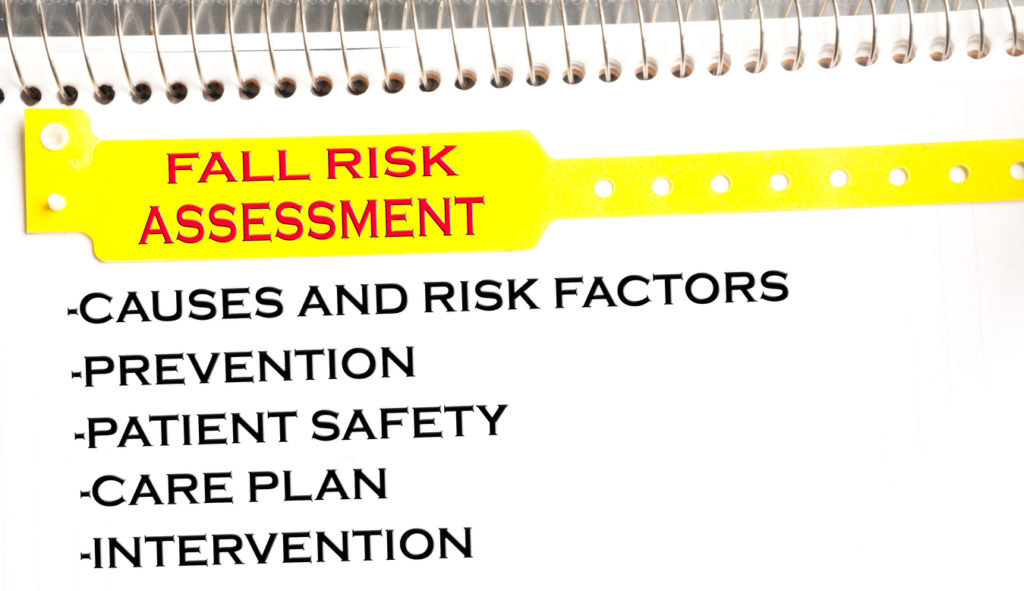Fatal Falls: What Seniors and Their Loved Ones Need To Know About Prevention and Safety

Fall risk assessment criteria
Because Americans are living longer, the elderly population is at a record high. Seniors are enjoying their golden years whether on a golf course playing with friends, aboard a cruise ship exploring the Caribbean or in a retirement community soaking up the amenities. Life is good – that is, until someone trips and tumbles.
Fatal falls among older adults are rising and becoming an unfortunate epidemic. Recent research reveals the rate of fatal falls as tripling in the last few years and topping out at 25,000 deaths annually.
“In the United States, an estimated 28.7% of adults aged 65 years or older fell in 2014,” states a research letter by the Journal of the American Medical Association – where the information was published – titled “Mortality From Falls Among US Adults Aged 75 Years or Older, 2000-2016.” “Falls result in increased morbidity, mortality, and health care costs. Risk factors for falls include age, medication use, poor balance, and chronic conditions…. Fall prevention strategies are typically recommended for adults older than 65 years.”
Robin Lee, of the Centers for Disease Control and Prevention, said the price tag associated with the epidemic is estimated at $50 billion per year. Lee noted that if fall prevention strategies are followed, as the Journal of the American Medical Association suggested, the number of deaths and dollars declines.
“As the United States population continues to age, we can expect more deaths from falls,” she said in a HealthDay article on WebMD titled “Study: Older Americans Are Dying More From Falls.” “We can also expect more hospitalizations and nursing home admissions as a result of falls.”
Trips and tumbles are the No. 1 cause of hip fractures and traumatic brain injuries. When hip fractures occur in older adults, half the time they result in death. What leads older adults to have such accidents? It is a combination of things including medications that can impair alertness and vision and neurological issues and problems with balance.
“People can die after a fall for many reasons, which may include head trauma, internal bleeding and complications of a bone fracture,” Dr. Marco Pahor, of the Institute of Aging at the University of Florida, said in the HealthDay article. “Fractures can lead to hospitalization, immobility in bed and respiratory or other infections, which can be fatal.”
Improving balance by strengthening muscles is key, and exercises to help achieve those goals are simple and can be done at home.
“Falls can be prevented,” Pahor said in a Reuters article titled “More elderly Americans dying from falls.” “Several steps can be taken to minimize the risks of falling and related injuries, including weight bearing exercises, such as walking, balance exercises, resistance exercises to strengthen muscles, prevention and treatment of osteoporosis, review of medications…correction of vision impairments, correction of foot problems or unsafe footwear, and correction of any home safety issues.”
Environment also is key, and many seniors have been in the same home for decades and do not like change. This is where loved ones can step in and help.
“If you have an aging parent, grandparent, or neighbor in your life, helping them reduce their risk of falling is a great way to help them stay healthy and independent as long as possible,” according to the National Council on Aging, which offers a multitude of resources on fall prevention strategies. “The good news about falls is that most of them can be prevented. The key is to know where to look.”
Here are some tips:
- Remove tripping hazards such as magazine racks and other low-to-the-ground items from the main walking paths of the home.
- Get rid of throw rugs, or use rubber backing or double-sided tape to secure them.
- Re-arrange furniture so there is more room to move around.
- Install grab bars in the bathroom or, better, install a walk-in shower / tub.
- Assess lighting and make sure there is enough of it.
- In homes with stairs, there should be handrails on both sides.
- Consult an occupational therapist.
“Occupational therapists help you continue doing the things you want and need to do every day,” the National Council on Aging states. “Occupational therapists ask, “What matters to you?” not “What’s the matter with you?” When it comes to falls, they can assess your home environment to identify hazards and suggest ways to improve the fit between your home and your activities to keep you safer. When purchasing equipment for your home, like grab bars, ramps, etc., it’s important to keep in mind that not every toilet, doorway, etc. is made equal. It’s not always as simple as going to your local hardware store or pharmacy and asking a clerk for assistance – sometimes you need an expert, and that’s where an occupational therapist can help.”
Share This


